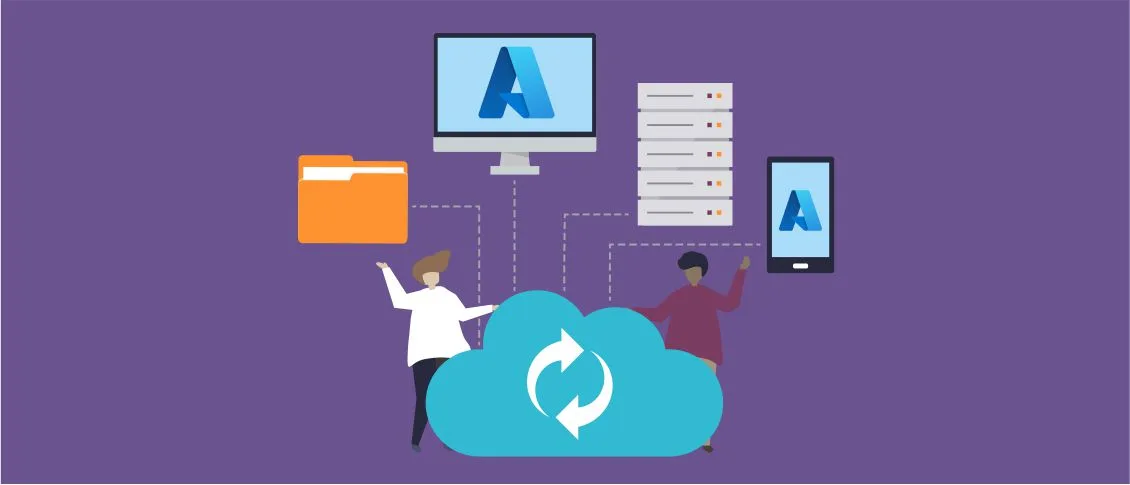- Overview
- Top reasons for cloud migration
- Is migrating to Cloud secure?
- Step 1 - Define the scope of cloud migration
- Step 2 - Choose a cloud migration strategy
- Step 3 - Define cloud migration success
- Step 4 - Choose a cloud environment
- Step 5 - Conduct a pilot migration
- Step 6 - Migrate
- Step 7 - Check and Support
- Cloud Migration Checklist
Overview
Cloud technology has had a huge impact on the security, functionality and scalability of modern businesses. They have become the primary way for most businesses of all sizes to store data, software applications and more.In this article, we will demonstrate the basic cloud migration steps to map out a cloud migration project plan.
Top reasons for cloud migration
Companies around the world are replacing outdated on-premises technologies with flexible, scalable and cost-effective computing power in the cloud. This migration offers many benefits to organizations of all sizes across a variety of industries. Some of the main reasons for migrating to the cloud include the following:
- Cost-effectife: Moving to the cloud reduces hardware, software and infrastructure costs. This allows organizations to pay only for the resources they use on a pay-as-you-go basis, minimizing operational costs.
- Scalability: Cloud platforms provide the flexibility to scale resources based on demand, allowing organizations to handle sudden spikes in traffic or workload without investing in additional physical infrastructure.
- Improved performance: Cloud service providers offer high-performance computing resources and modern infrastructure that can enhance application performance, resulting in improved user experience and productivity.
- Accessibility and flexibility: Cloud computing allows employees to access data and applications from anywhere there is an Internet connection, facilitating remote working and collaboration. It also allows organizations to implement flexible work schedules and maintain a distributed workforce.
- Enhanced Security: Leading cloud providers invest heavily in security measures, offering robust data encryption, access controls, threat detection, and compliance certifications. Cloud environments often provide better security than traditional on-premises infrastructure, especially for smaller organizations with limited resources.
- Disaster Recovery and Business Continuity: Cloud platforms offer built-in backup and redundancy solutions, making it easier for organizations to implement robust disaster recovery strategies and ensure business continuity in the event of data loss or system failure.
- Innovation and agility: Cloud services provide access to a wide range of advanced technologies such as artificial intelligence, machine learning, big data analytics and IoT platforms. This enables organizations to innovate faster, experiment with new ideas, and stay competitive in rapidly changing markets.
- Simplified Management and Maintenance: Cloud service providers handle hardware provisioning, software updates, security patches, and infrastructure management, reducing the burden on internal IT teams and allowing them to focus on strategic initiatives rather than routine maintenance tasks.
However, making this transition is not easy without a well-developed cloud migration project plan and experience with the cloud.
Is migrating to Cloud secure?
Cloud service providers invest heavily in security measures to protect data, applications, and infrastructure. They typically offer robust encryption, access controls, threat detection, and compliance certifications to ensure the security and privacy of their customers’ data.
However, it’s essential for organizations to implement proper security measures and best practices when migrating to the cloud. This includes encrypting sensitive data, implementing multi-factor authentication, regularly updating security configurations, monitoring for unauthorized access or unusual activity, and adhering to regulatory compliance requirements.
While cloud migration offers many security benefits, it’s crucial for organizations to assess their security posture, understand potential risks, and implement appropriate security controls to mitigate threats and protect their assets in the cloud.
Step 1 – Define the scope of cloud migration
Defining the scope of cloud migration is a crucial first step to ensure a successful transition and create a quality cloud migration strategy document for future reference when needed. Here’s a breakdown of the key components to consider when defining the scope:
- Objectives and Goals: Clearly outline the reasons for migrating to the cloud and the specific goals you aim to achieve. This could include cost reduction, scalability, improved performance, enhanced security, or other strategic objectives.
- Assets to Migrate: Identify the applications, data, workloads, and IT processes that will be migrated to the cloud. Determine whether you’ll be migrating all assets or prioritizing specific ones based on business needs and dependencies.
- Migration Approach: Decide on a cloud migration strategy roadmap that best fits your organization’s requirements.
- Timeline and Milestones: Establish a timeline for the migration project, including key milestones and deadlines. Define the sequence of migration activities and dependencies to ensure a smooth transition with minimal disruption to business operations. To accomplish this, prepare a cloud migration roadmap.
- User Training and Change Management: Develop a plan for user training and change management to facilitate adoption of cloud technologies and processes. Communicate the benefits of cloud migration and provide training to employees on new tools and workflows.
- Risk Management and Contingency Planning: Identify potential risks and develop mitigation strategies to address them. Establish contingency plans for unexpected issues or downtime during the migration process.
By defining the scope of cloud migration upfront, organizations can align stakeholders, set clear expectations, and establish a cloud migration roadmap to successfully navigate all stages of cloud migration. This ensures that the migration project stays on track, achieves its objectives, and delivers value to the business.
Step 2 – Choose a cloud migration strategy
Choosing the right cloud migration strategy is crucial for optimizing the benefits of moving to the cloud while minimizing risks and disruptions to business operations and making a clear cloud migration project plan. Here are some common cloud migration strategies to consider:
- Rehost (Lift and Shift): This strategy involves lifting existing applications and workloads from on-premises infrastructure and shifting them to the cloud without making any significant changes to the application architecture.
- Replatform (Lift, Tinker, and Shift): Replatforming involves making minor modifications to applications or infrastructure components to optimize them for cloud environments while preserving core functionality.
- Refactor (Re-architect): Refactoring involves redesigning and rearchitecting applications to leverage cloud-native technologies and services fully. This may include breaking monolithic applications into microservices, adopting serverless architectures, or integrating with cloud-native databases.
- Repurchase (Drop and Shop): Repurchasing involves replacing existing applications or software with cloud-based alternatives or Software-as-a-Service (SaaS) solutions.
- Retain (Keep as Is): This strategy involves maintaining certain applications or workloads on-premises while selectively migrating others to the cloud.
When choosing a cloud migration strategy roadmap, organizations should consider factors such as the complexity of their existing infrastructure, application dependencies, security requirements, performance objectives, and long-term business goals. It’s also essential to involve stakeholders from across the organization and seek expert cloud migration project plan from specialists to ensure the smooth and successful execution of cloud migration steps.
Step 3 – Define cloud migration success
Defining success for a cloud migration project involves setting clear objectives, benchmarks, and key performance indicators (KPIs) to measure the effectiveness and impact of the migration effort.
Key performance indicators (KPIs) for cloud migration help assess the effectiveness, efficiency, and impact of the migration project. Once these have been identified, you should also bring them into your project plan for cloud migration. Here are some common KPIs to consider:
Cost Savings/ROI: Measure the cost savings achieved through the migration compared to the previous on-premises or legacy infrastructure. This could include reduced infrastructure costs, operational expenses, or licensing fees. KPIs include:
- Total cost of ownership (TCO) reduction
- Return on investment (ROI) from the migration
Resource Utilization and Efficiency: Evaluate the utilization of cloud resources (e.g., compute, storage, networking) to ensure optimal allocation and cost-effectiveness. KPIs include:
- Resource utilization rates
- Percentage of unused or underutilized resources
Application Performance: Assess the performance of migrated applications and workloads in the cloud compared to on-premises environments. KPIs include:
- Application response time
- Throughput
- Availability and uptime
Scalability and Elasticity: Measure the ability of cloud resources to scale up or down based on demand to meet performance requirements. KPIs include:
- Scalability of applications and workloads
- Auto-scaling efficiency
Security and Compliance: Evaluate the effectiveness of security measures implemented in the cloud environment to protect data, applications, and infrastructure. KPIs include:
- Compliance with security standards and regulations (e.g., GDPR, HIPAA)
- Number of security incidents or breaches
Migration Time and Complexity: Assess the time and effort required to migrate applications, data, and workloads to the cloud. KPIs include:
- Migration timeframes (e.g., time to migrate a specific workload)
- Complexity of migration tasks (e.g., number of manual interventions required)
User Satisfaction: Measure user satisfaction with the migrated applications and services in the cloud. KPIs include:
- User feedback and surveys
- User adoption rates
Business Agility and Innovation: Evaluate the organization’s ability to innovate and respond to changing business requirements after steps to cloud migration. KPIs include:
- Time-to-market for new features or services
- Number of new initiatives or projects enabled by the cloud
Operational Efficiency: Assess the efficiency of IT operations and management processes in the cloud environment. KPIs include:
- Mean time to resolution (MTTR) for incidents
- Automation levels for provisioning, monitoring, and management tasks
Compliance with Service Level Agreements (SLAs): Measure the organization’s ability to meet SLAs for performance, availability, and reliability in the cloud. KPIs include:
- SLA adherence for cloud services
- Downtime or service interruption incidents
By tracking these KPIs throughout the steps to cloud migration, organizations can evaluate the success of their migration efforts, identify areas for improvement, and demonstrate the value of cloud adoption to stakeholders.
Step 4 – Choose a cloud environment
Choosing the right cloud environment is a critical decision that impacts the success of a cloud migration project plan. Cloud environments offer different features, capabilities, and pricing models tailored to various use cases and business needs.
Cloud environments can be classified into several deployment models:
- Public Cloud: Public cloud environments are owned and operated by third-party cloud providers, such as Amazon Web Services (AWS), Microsoft Azure, Google Cloud Platform (GCP), and IBM Cloud. Resources are shared among multiple users and organizations, offering scalability, flexibility, and cost-effectiveness.
- Private Cloud: Private cloud environments are dedicated and isolated infrastructure environments operated by a single organization or third-party provider. They offer greater control, security, and customization compared to public clouds but require higher upfront investments and ongoing maintenance.
- Hybrid Cloud: Hybrid cloud environments combine elements of public and private clouds, allowing organizations to integrate and orchestrate workloads across multiple cloud environments and on-premises infrastructure. This provides flexibility, scalability, and the ability to leverage the benefits of both public and private clouds.
- Multi-Cloud: Multi-cloud environments involve using services and resources from multiple cloud providers to avoid vendor lock-in, improve resilience, and optimize performance and cost. Organizations can deploy workloads across different cloud platforms based on specific requirements and preferences.
Step 5 – Conduct a pilot migration
Pilot migration is an important step in the cloud migration process to validate migration strategies, test infrastructure, identify potential issues and mitigate risks before proceeding with a full-scale migration.
The insights gained from a pilot migration can be used to develop and refine an overall cloud migration strategy roadmap, ensuring a smoother and more successful transition to the cloud.
Step 6 – Migrate
Performing cloud migration milestones:
- Data migration: Migrate data from on-premises storage systems to cloud storage solutions using various methods such as online data transfer, offline data transfer, or cloud-based data migration services.
- Application migration: Migrate applications and workloads to the cloud environment according to the chosen migration strategy (rehosting, refactoring, replatforming, repurchasing, or retaining).
- Testing and validation: Conduct thorough testing and validation of migrated applications, data, and workloads to ensure functionality, performance, scalability, and security in the cloud environment.
- User acceptance testing: Involve end-users in testing and validation activities to validate that migrated applications meet business requirements and user expectations.
Keep communication channels open, involve stakeholders throughout the process, and adapt your approach as needed to ensure that cloud migration phases are executed smoothly and successfully.
Step 7 – Check and Support
After completing the cloud migration phases, it’s essential to conduct thorough checks and provide ongoing support to ensure the stability, performance, and security of the cloud environment.
Cloud Migration Checklist
Certainly! Here’s a comprehensive cloud migration step by step checklist covering various aspects of the migration process:
1. Pre-Migration Planning and Assessment:
- Define objectives and goals for the migration.
- Assess current infrastructure, applications, and data.
- Identify migration priorities and dependencies.
- Determine migration strategy (rehost, refactor, replatform, repurchase, retain).
- Develop a detailed cloud migration roadmap with timelines and tasks.
- Allocate resources and establish roles and responsibilities.
2. Cloud Environment Setup:
- Choose a cloud provider based on business requirements.
- Set up a cloud account and subscription.
- Configure networking, security, and access controls.
- Provision necessary cloud resources (compute, storage, networking).
- Configure backup and disaster recovery solutions.
- Set up monitoring and logging for performance and security.
3. Data Migration:
- Assess data readiness and compatibility for migration.
- Determine migration methods (online, offline, cloud-based).
- Migrate data to the cloud environment.
- Validate data integrity and consistency post-migration.
- Establish data synchronization and replication mechanisms if needed.
4. Application Migration:
- Assess application readiness and compatibility for migration.
- Choose an appropriate migration strategy for each application.
- Rehost, refactor, replatform, repurchase, or retain applications as necessary.
- Migrate applications to the cloud environment.
- Conduct thorough testing and validation of migrated applications.
5. Testing and Validation:
- Test functionality, performance, and scalability of migrated applications.
- Conduct user acceptance testing (UAT) to ensure business requirements are met.
- Validate security controls and compliance with regulatory requirements.
- Perform load testing and stress testing to assess performance under various conditions.
- Address any issues or bugs identified during testing and validation.
Explore our Software Migration Services.

















